Simulink Modeling - Aerodynamic Decelerator Systems Laboratory
Simulink Modeling
Having a full aerodynamic model allows assessing UAS performance and test advanced control algorithms in computer simulations. To this end, Fig.P presents the top level of a generic UAS model developed in Simulink development environment. This model allows finding trimming conditions, performing system dynamics simulation, and executing system identification (if flight test data are available). In this model computation of aerodynamic forces and moments is isolated into a separate superblock appearing on the left (and also shown in Fig.Q), while six-degree-of-freedom (6DoF) equations of motion are combined into another major superblock shown on the right (and also shown in Fig.R). The developed model also uses a data base of the actual wind profiles recorded at different locations at the different time of day / year (the smaller superblock on the top in Fig.P).
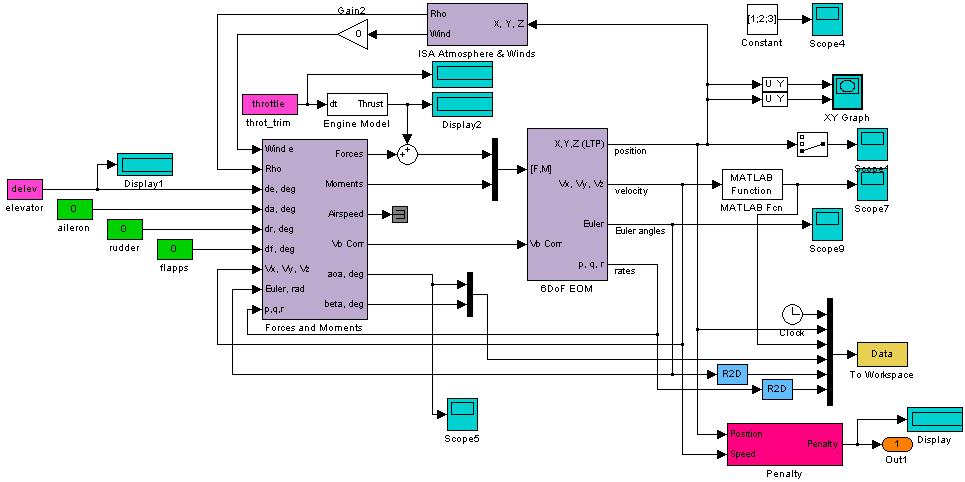
Figure P. Top view layer of the developed Simulink model.
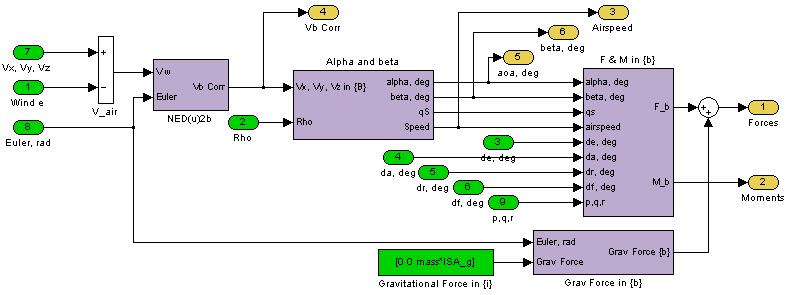
Figure Q. Computation of forces and moments.

Figure R. Modeling 6DoF equations of motion.
Figure S shows an example of series of simulations that were conducted to verify the dynamic response of the UAS model. This figure features a response to the step increase of the thrust by 10% (Fig.Sa), elevator deflection by -1° (trailing edge up) (Fig.Sb), aileron deflection by -1° (left aileron down) (Fig.Sc, and rudder deflection by -1° (trailing edge to the right) (Fig.Sd).
a) 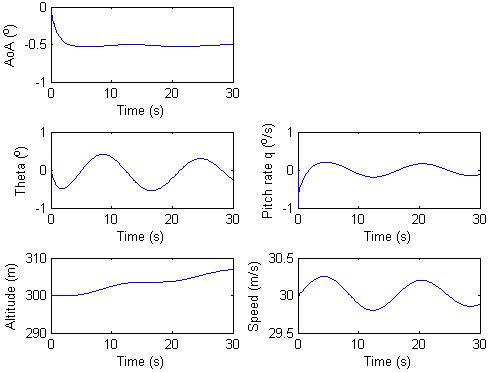
c) 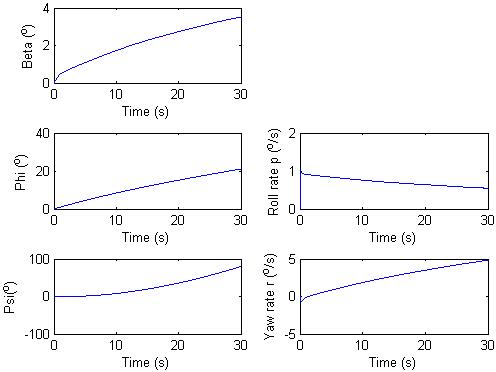
b) 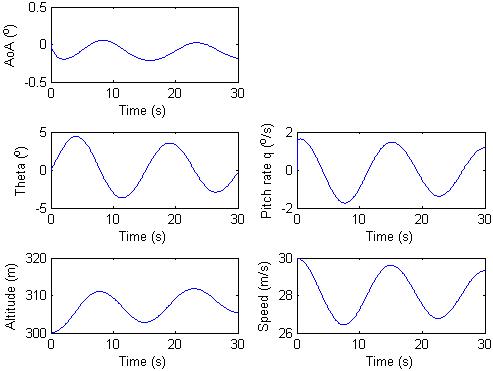
d) 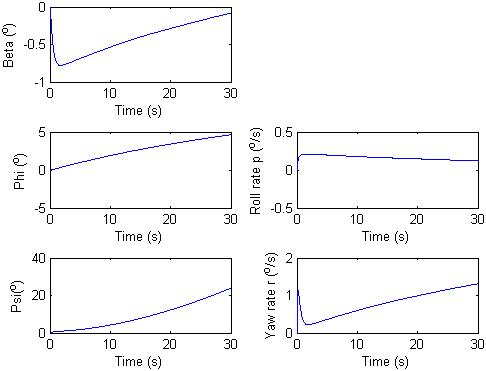
Figure S. Throttle (a), elevator (b), aileron (c), and rudder (d) step-input responses.

